Jim Gerhart, January 2021
Cabbage Hill once had its very own volunteer fire company. From 1838 to 1882, it served the West King and Manor Street corridors. Starting very humbly as the Humane Hose Company, it fought many fires and was a source of much neighborhood pride.
The Humane Hose Company was established in 1838 by a group of civic-minded citizens of the west and southwest sections of Lancaster. In August of that year, they purchased a hose carriage from a company in Philadelphia and paraded it through the streets of Lancaster, with the “uniform of the members neat and appropriate” and its members “entitled to much credit for their zeal and public spirit.”
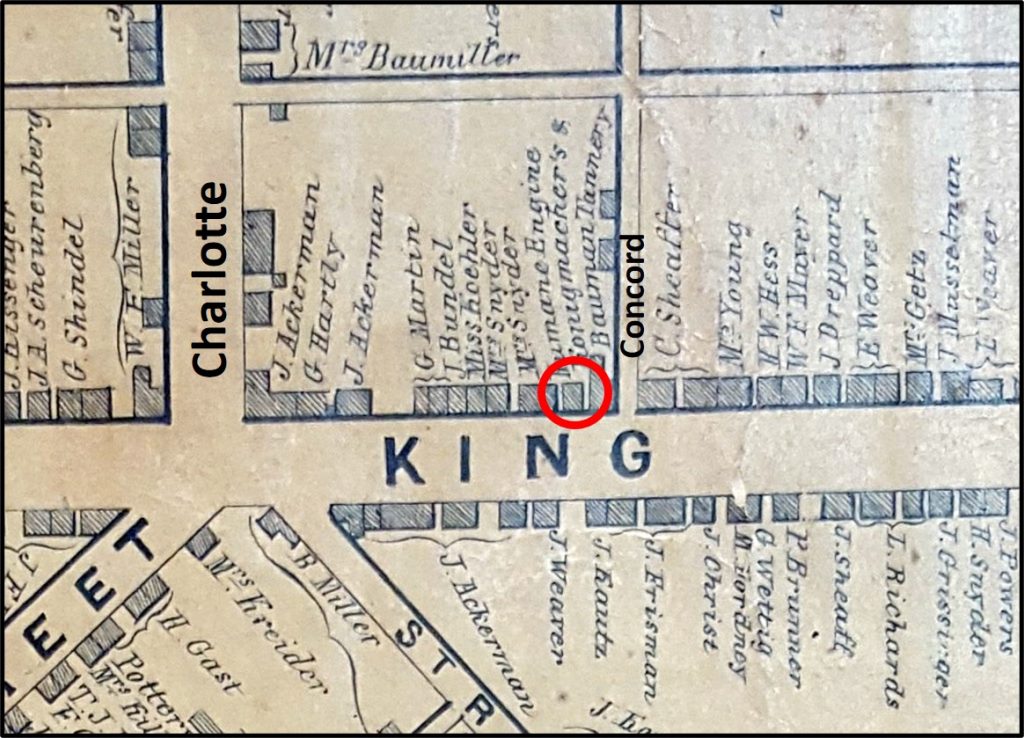
In March 1839, the charter of the Humane Hose Company was approved, limiting the company to 40 subscribing members and establishing its hierarchy of officers and directors. The company rented part of a lot on the north side of West King just above Concord, and built a small frame building in which to keep its hose carriage.
In the early 1840s, a few of Lancaster’s more established fire companies had their own horse-drawn, hand-pumper engines, but the Humane only had a hose carriage, which was simply a large reel holding a wound-up hose on a four-wheeled carriage. The members of the Humane would pull the carriage to the scene of a fire using ropes, unwind the hose and hook it to one of the city’s new fire plugs, and use the hose to fill the tanks of the hand-pumpers of the other companies.
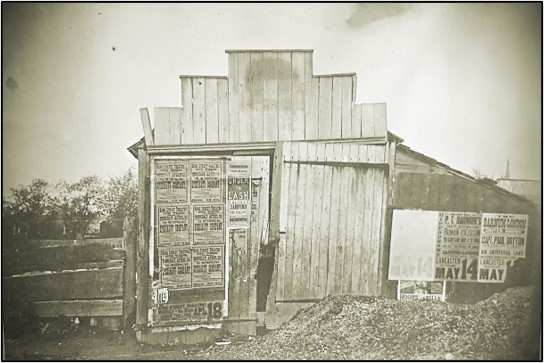
In June 1853, for $225, the Humane purchased the rear portion of a lot on West King to be the site of their new larger hose house. The Humane’s lot fronted 21 feet on the northwest side of Manor and extended 30 feet in depth. The Humane built a two-story brick hose house on the site, approximately where the rear parking lot for Reveron Electronic, Inc. is today, across from 424 Manor. The hose house was topped with a bell tower from which fire calls would ring out.
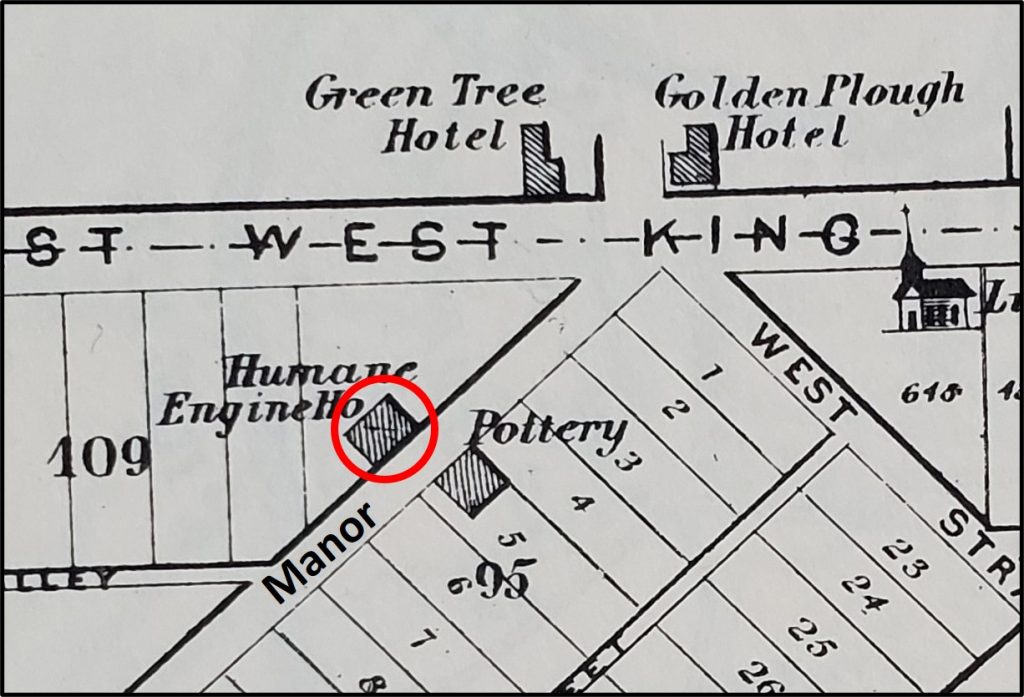
At the time the Humane’s new hose house was built, the company boasted 75 active members. Only six were property owners; the others were minors or those “who earn their bread by hard labor”. Their hose carriage had become old and was in need of repair, eight sections of hose were deemed too old to function dependably, and the company was $550 in debt. Other volunteer companies also were struggling with hose problems, and in 1854, the city allocated $3,000 to be shared among the Humane and four other companies for the purchase of new hoses.
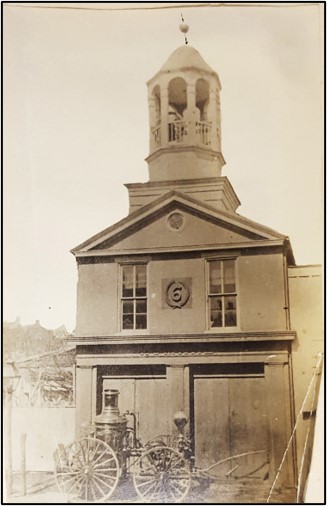
By 1857, the Humane’s situation had improved to the point that it was able to purchase its first engine—a used hand-pumper purchased from the Union Fire Company for $300. The hand-pumper engine was a metal tank mounted on a horse-drawn, four-wheeled carriage. In the tank, which was filled with water, was a set of pistons that were operated by long horizontal levers called brakes extending from either side of the carriage. Teams of men moved the brakes up and down in rapid succession to activate the pistons, drawing water in from a hose connected to a water source with one stroke, and then driving the water out under pressure through a hose leading to the site of the fire with the next stroke.
The Civil War had a major impact on the Humane. The call for soldiers drew on the same pool of young men who were active in the Humane. In early September 1862, about 10 days before the Battle of Sharpsburg (Antietam), the Governor of Pennsylvania asked for all able-bodied men to start military drills in their neighborhoods, as the Confederate Army was moving north to invade the state. As a result, a large number of men from the “Hill” met at the Humane’s hose house to get organized. One of the speakers noted that 69 of the Humane’s volunteers had become soldiers and that only 18-20 volunteers were still available locally to fight fires.
By the mid-1860s, the Humane decided that it should have a steam-pumper like the one the Union Fire Company had recently acquired. A steam-pumper consisted of a steam boiler mounted on a horse-drawn, four-wheel carriage. The steam boiler was used to pressurize the water, forcing a stream of water through a hose directed at a fire. In 1866, the members of the Humane began canvassing the neighborhood for subscriptions to buy a new steam-pumper.
In early January 1867, after enough money had been pledged, a committee was appointed to purchase a steam-pumper. The committee went to Philadelphia to purchase the new apparatus, and a couple weeks later the new steam-pumper was delivered to Lancaster. The steamer was purchased for $2,800 from the Undine Steam Fire Company of Holland, New York, and had been built by A.B. Taylor.
On a cold January day, a parade was held to deliver the new steamer to the Humane’s house on Manor. Six Lancaster fire companies were represented, in addition to 75 men from the Humane. After the parade was over, the men of the Humane were anxious to see their new engine perform, so they took it back down to the square, where they fired it up and threw a stream of water 200 feet up North Queen.
In the early 1870s, the Humane is said to have declined in membership, and was saved from folding only by a reorganization in late 1875. Hugh Fulton was elected President, and the company officially modified its charter in April 1876, taking on the unwieldy new name of the Humane Steam Fire Engine and Forcing-Hose Company No. 6.
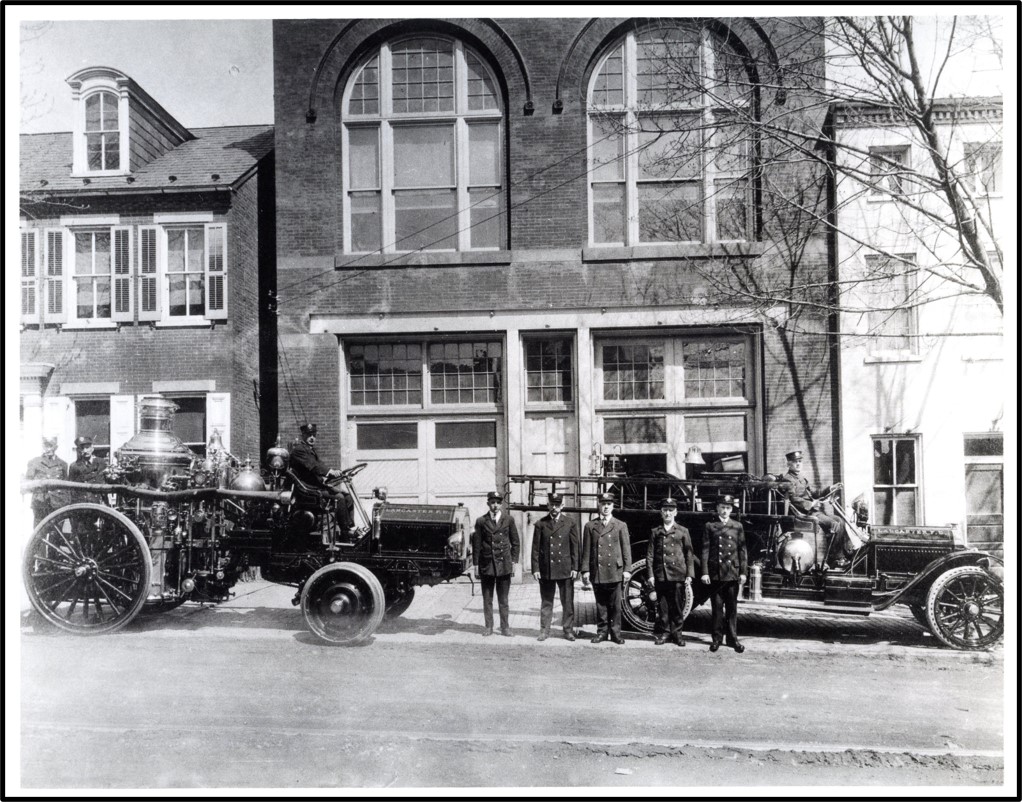
The revitalized Humane decided to move out of its aging house on Manor. A lot was purchased for $2,100 not far away on the north side of the 400 block of West King, and the foundation for a new larger building was laid there in 1878. The new engine house cost almost $5,300, and was completed in 1880. It still stands at 411 West King and is currently occupied by Station One Center for the Arts.
The grand opening of the new West King engine house in October 1880 was marked by a ball attended by 150 couples. The ball was held in the large second-floor room of the new house, which measured 40 by 100 feet. The newly energized version of the Humane seemed to be on its way, but within about two years, it went out of business when Lancaster City decided to take over the firefighting services that had heretofore been handled by the numerous volunteer companies.
In April 1882, the new city fire department was established, and in June 1883, the city purchased the Humane’s three-year-old house on West King for $5,200. The city designated the house on West King as its Station House No. 1, which would remain in use for many decades.
The Humane Hose Company on Manor is now a forgotten ghost of old Cabbage Hill, but in its time it was a formidable firefighting organization that helped protect the Hill’s buildings for some 40 years, as well as an important part of the Hill’s social scene.

